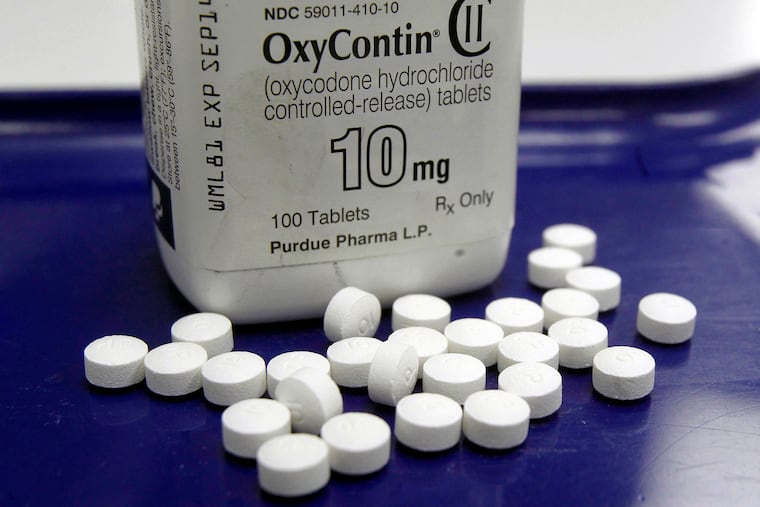Suing Big Pharma is only a part of the overall solution to the opioid crisis | Editorial
There is no amount of money that would make the opioid crisis go away.

In recent years, litigation took center stage in the efforts to address the opioid overdose crisis. Reporting that companies like Purdue Pharma — the manufacturer of OxyContin — aggressively marketed its product led to a wave of lawsuits against opioid manufacturers and distributors.
Last week, there were two major developments in opioid litigation that may hint at potential for states like Pennsylvania that are involved in these lawsuits.
On Monday, in the first trial against an opioid manufacturer or distributor for its role in the crisis, a federal judge in Oklahoma ruled that Johnson & Johnson needs to pay $572 million to the state of Oklahoma. The figure is far short from the $17 billion that the state asked for. The judge wrote that although Oklahoma argued that it would take two decades to address the crisis, the state did not provide sufficient evidence for the time and cost that a response would need beyond the first year. Johnson & Johnson plans to appeal.
Later the same week, details emerged on a global settlement negotiation with Purdue Pharma to end more than 2,000 lawsuits. The total value of the settlement is reported at $10-$12 billion. However, that does not mean billions in cash. The Sackler family, which owns Purdue, would contribute $3 billion and give up ownership of the company — it’s unclear how that value would translate to actual funds for states, how much money, and how fast.
What do these legal developments mean for Pennsylvania?
More than 4,400 people died of an overdose in Pennsylvania last year — a significant decrease from the 5,300 deaths in 2018. But the death counts alone don’t not capture the entire magnitude of the crisis. According to the National Survey on Drug Use and Health, there are about 20 million living with a drug or alcohol use disorder in the United States, many of whom live in Pennsylvania.
Pennsylvania is going to be a commonwealth in recovery for decades. There is no short-term plan or dollar amount that will end this crisis overnight — or in a matter of years.
These rulings and settlements don’t address the underlying regulations that allowed pharmaceutical companies to aggressively market their products in the first place. Last year, Philadelphia’s City Council failed to pass a bill that would require pharmaceutical representatives to register with the city and would prohibit gifts, such as meals, which research shows to correlate with increased prescribing.
Putting too much faith in opioid litigation also ignores that substance use disorder goes beyond opioids. Deaths related to cocaine and meth have been increasing in Pennsylvania. Alcohol use disorder is still a major problem. As a commonwealth, and as a nation, we need to reform our addiction treatment systems and invest in recovery programs to provide services to people in addiction, regardless of the substance.
Holding the pharmaceutical companies that profited off of addiction and pain to account is important and has inherent value. However, efforts to respond to the crisis should continue in parallel to legal action. Any funds that might come from litigation would be a bonus — not the solution itself.